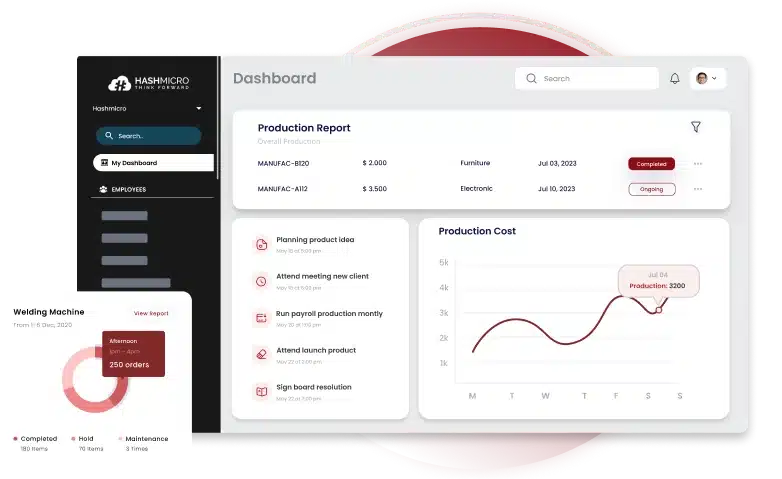Sustainability goals mean nothing without the data to back them up. As climate reporting moves from “nice to have” to “non-negotiable,” more Philippine companies are starting to treat carbon accounting as a core part of doing business, not just a checkbox.
Whether you’re aiming for net zero, trying to meet SEC disclosure requirements, or just want better control over energy costs, it all starts with one thing: knowing your numbers. But here’s the catch: tracking carbon emissions isn’t always straightforward.
Between scattered data, supplier delays, and ever-changing reporting frameworks, many teams are stuck in manual mode. The good news? Pero ang good news? With the right tools and setup, puwede nang gawing malinaw, reliable, at real-time ang accounting.
So, what exactly is carbon accounting and how does it fit into your business operations as a whole? Keep reading to find out!
Key Takeaways
|
Table of Contents
What is Carbon Accounting?
Carbon accounting, or greenhouse gas accounting, refers to measuring the greenhouse gases (GHGs) a business or organization emits, both directly and indirectly, within defined limits. Also referred to as greenhouse gas accounting, this process works in a way that’s comparable to financial accounting.
Carbon accounting is named after carbon dioxide (CO₂), the most prevalent greenhouse gas and the leading driver of global climate change. Most carbon accounting frameworks express other greenhouse gas emissions in terms of carbon dioxide equivalent, or CO₂e.
The well-known Greenhouse Gas Protocol, created by the World Resources Institute and the World Business Council for Sustainable Development, categorizes a company’s emissions into three groups, known as “scopes.”
- Scope 1 Emissions: These are direct emissions that come from the company’s own operations. Examples include emissions from manufacturing, chemical processes, or on-site power generation using fossil fuels.
- Scope 2 Emissions: These are indirect emissions that come from the production of energy, like electricity, steam, heating, or cooling, that the company purchases and uses. Depending on the industry, Scope 2 can make up a large share of a company’s total emissions.
- Scope 3 Emissions: Also known as supply chain emissions, Scope 3 refers to indirect emissions that result from a company’s activities but come from sources it doesn’t own or control.
Why Does Carbon Accounting Matter?
The need for reliable greenhouse gas (GHG) accounting, including carbon accounting, is rising fast, especially as more businesses and investors want to show they’re serious about cutting emissions.
As of early 2025, 142 countries representing 76% of global emissions, 78% of the world’s economy (GDP based on purchasing power), and 84% of the global population have set or pledged to reach net zero by 2050.
That being said, carbon accounting matters for a few key reasons:
- ESG Reporting: Investors who care about sustainability often look at ESG reports before deciding where to invest. Carbon accounting helps companies measure and report their environmental footprint, so that they can create more thorough ESG reporting.
- Following the Law: In many countries like the US and UK, companies are now required to report how they affect the environment and take action to cut down their emissions. Carbon accounting is the go-to method for doing this accurately.
- Boosting Efficiency: Tracking carbon emissions can also help a company spot areas where it’s wasting resources. High emissions often mean low efficiency, so cutting emissions can often lead to lower costs and smarter operations.
Accounting for Suppliers’ Emissions
Tracking Scope 3 emissions is especially difficult because it depends on data provided by a company’s various suppliers.
The Greenhouse Gas Protocol outlines four ways to account for Scope 3 emissions:
- Supplier-specific method: This approach gathers full life cycle emissions data (covering Scopes 1, 2, and 3) from each supplier for the goods or services purchased.
- Hybrid method: The business collects Scope 1 and 2 data from suppliers but estimates some or all of the Scope 3 emissions using external industry data.
- Average-data method: Also called the activity-based method, this calculates emissions by multiplying the quantity of products or services purchased by a set emissions factor. For example, a company buying office computers would multiply the number of units by the relevant emissions factor.
- Spend-based method: Similar to the average-data method, but instead of using quantity, it multiplies the cost of goods or services by an emissions factor.
What’s the Difference between Greenhouse Gas Accounting and Carbon Accounting?
Carbon accounting and greenhouse gas accounting refer to the same process. Since carbon dioxide is the most common greenhouse gas, the term “carbon” is often used to represent all types of greenhouse gases.
Benefits of Carbon Accounting
Beyond compliance, carbon accounting brings real, measurable advantages to your business. From cutting hidden costs to winning new opportunities, here are some key benefits worth paying attention to:
1. Stay Ahead of Climate-Related Regulations
With the Philippine SEC mandating sustainability disclosures and discussions around carbon pricing gaining traction, businesses can no longer afford to delay action. Carbon accounting equips you with the data to prevent or minimize unexpected costs as policies evolve.
2. Support Permits and Compliance with Data-Backed Reports
Some LGUs and eco-zones are beginning to request sustainability metrics during permit renewals or expansion approvals. Carbon accounting allows you to present accurate, organized data on your environmental footprint—strengthening your position during regulatory reviews.
3. Win More Bids Through Sustainability Credentials
Large enterprises and MNCs operating in the Philippines, such as Nestlé, Ayala, or Unilever, are increasingly prioritizing low-emission suppliers. Being able to provide verifiable emissions data can give your company a competitive edge in tenders and long-term procurement partnerships.
4. Reduce Energy and Fuel Costs Through Better Visibility
With the Philippines facing some of the highest electricity prices in ASEAN, energy efficiency is becoming a business necessity. Carbon accounting helps you pinpoint energy-intensive activities across operations, identify cost-saving opportunities, and reduce avoidable overhead.
5. Meet International Buyer Requirements
Exporters targeting markets like the European Union, Japan, or Australia are already seeing stricter standards on carbon disclosures. Buyers increasingly expect carbon footprint data at the product level.
For Philippine exporters, especially those dealing in sectors like steel, cement, and aluminum, this means that providing accurate emissions data will be crucial to maintain market access.
Challenges of Carbon Accounting
Many companies still rely on spreadsheets and manual data entry for their yearly carbon accounting and ESG rating reports. This approach can lead to more mistakes and wasted time, especially for large, global companies that need to follow several reporting standards.
These companies often deal with these issues:
- Scattered data: Information on carbon, energy, waste, water, and social impact often comes from different departments and tools. Because it’s not stored in one place, it’s hard to use for reporting or decision-making.
- Unreliable data quality: When data is collected manually, there’s a higher chance of mistakes or missing info. To create reports that financial teams or auditors can trust, the data needs to be accurate and traceable from start to finish.
- Reporting takes too much time and money: Gathering activity data and calculating emissions manually is slow and expensive. Spreadsheets make the process even harder to manage at scale.
- Lack of visibility into performance: Without clear, accurate, and combined data, it’s tough to track progress or measure how well sustainability projects are doing over time.
How to Get Finance-Grade Carbon Accounting Data
 To make carbon accounting truly useful, you need high-quality data. Here’s how to build a strong, audit-ready foundation for your emissions tracking:
To make carbon accounting truly useful, you need high-quality data. Here’s how to build a strong, audit-ready foundation for your emissions tracking:
1. Centralize and Automate Data Collection
GHG data is often scattered across different systems or stuck with suppliers who may not be ready to share it. To get complete and accurate numbers, businesses need to plan how they’ll collect this data regularly and automate it where possible.
2. Work with Utility Providers Directly
Energy use data is key for carbon tracking. The best source is utility meter data, but with thousands of providers, each with their own rules, it’s often tricky, especially for businesses with sites in multiple locations.
3. Build a Smart, Flexible Data Structure
Data should be organized to support your emissions targets. Tagging data by account, meter, site, or emissions type helps in both tracking and reporting. Targets can be set at the asset level and rolled up to the company level, with the option to use intensity targets for benchmarking.
- Meters and Accounts: The most detailed data usually comes from accounts (monthly or quarterly utility costs) and meters (daily energy use, often in 15–30 min intervals).
- Locations: Locations track utility use (electricity, water, gas) and can have multiple meters or accounts for the same utility.
- Organization: Organizational-level data combines all location data into a single view for reporting.
- Reporting Groups: Used to group locations and set boundaries for sustainability reporting.
4. Get Your Data Audit-Ready from the Start
Audits are important for confirming your progress in cutting carbon emissions. The results matter for how your organization is run. But getting your data ready for an audit, and making sure it’s clear and trackable, isn’t always easy.
5. Involve More Than Just the Sustainability Team
Managing energy and emissions data isn’t just one team’s job. Successful companies bring in people from across departments and set clear policies to make sure everyone plays a role in collecting and handling the right data.
HashMicro’s ESG Software makes everything above simpler, faster, and fully integrated with your day-to-day operations. Curious about the cost? Check out our pricing scheme here and see which plan fits your business best!

Best Practices of Conducting Carbon Accounting
You already learned what carbon accounting is and how to obtain the necessary data. However, in order to have the most accurate data, as well as effective accounting processes, you need to know the best practices.
Here are eight best practices that you can implement in your company:
1. Start With a GHG Inventory Map
Before anything else, map your emission sources per facility, vehicle, machine, product line, etc. Most companies fail here by lumping data into broad buckets (e.g., “Operations” or “Fleet”). Precision matters. Get that emission source-to-asset mapping tight from the start.
2. Set Up a Cross-Functional Data Taskforce
Don’t trap carbon accounting inside the ESG or sustainability team. Form a taskforce with finance, procurement, ops, and even HR, so data is collected from all angles: utility bills, supplier records, transport logs, refrigerant use, and more.
3. Push for Primary Activity Data, Not Just Spend-Based Proxies
Yes, it’s easier to estimate Scope 3 with spend-based factors, but that’s weak data. Push suppliers for real numbers: freight distances, fuel use, packaging weights. Even if only 20% of your suppliers comply, you’ll dramatically improve reporting accuracy over time.
4. Invest in Meter-Level Utility Data Where It Matters
Don’t rely only on monthly bills. Install smart meters for high-consumption sites or equipment (e.g., factories, cold storage, server rooms). This gives you 15-minute interval data, making it easier to spot spikes, leaks, or off-hour waste and opens doors to real-time decarbonization.
5. Tag Every Data Point with Time, Location, Source, and Owner
Make each data entry auditable. For every emissions input, include:
- When it happened (timestamp)
- Where it happened (site/facility name)
- What it’s tied to (e.g., forklift usage, generator runtime)
- Who submitted or owns the data
6. Treat Emissions Like Money: Reconcile Monthly
Finance doesn’t wait a year to check the books, and neither should sustainability. Do monthly GHG data “closing” cycles: pull the latest readings, reconcile gaps, and flag abnormalities. It keeps things accurate and saves your ESG team from yearly data panic.
7. Use Intensity Metrics, Not Just Totals
Total emissions don’t tell the full story. Add intensity metrics like:
- kg CO2e per unit produced
- kg CO2e per employee or per revenue
- kg CO2e per square meter
8. Build a Scenario Planning Model with Real Variables
Once your data is solid, simulate “what ifs”:
- What if we electrify half the fleet?
- What if we shift suppliers to one closer port?
- What’s the emission impact if we move from diesel to LNG?
Scenario modeling helps leadership see the impact of strategic decisions before they commit.
Is Carbon Accounting Mandatory in the Philippines?
As of now, carbon accounting is not mandatory for all companies in the Philippines, but it is increasingly required for specific sectors and entities, with stronger regulations on the horizon.
1. Publicly Listed Companies
The Philippine Securities and Exchange Commission (SEC), through Memorandum Circular No. 4, Series of 2019, requires all publicly listed companies (PLCs) to submit sustainability reports. These reports must include disclosures on greenhouse gas (GHG) emissions.
Initially, the SEC adopted a “comply or explain” approach, but starting in 2026, full compliance will be mandatory, meaning all PLCs must report their GHG emissions in detail.
2. Government and Sectoral Reporting
In 2014, Executive Order No. 174 established the Philippine Greenhouse Gas Inventory Management and Reporting System (PGHGIMRS).
This system institutionalizes GHG inventory practices across key government agencies and sectors such as energy, agriculture, transport, and waste. While primarily focused on public institutions, it also encourages private sector involvement in GHG monitoring and reporting.
3. Voluntary Initiatives and Industry Standards
Many private companies, particularly exporters and large multinationals, are already practicing carbon accounting on a voluntary basis. This is often done to align with international standards, meet investor expectations, or prepare for future regulation.
The government has published the Philippine GHG Inventory and Reporting Protocol Manual for Business, offering detailed guidance to help businesses measure and disclose emissions consistently.
Simplify Carbon Accounting with HashMicro’s ESG Software
 As more Philippine companies move toward sustainability targets and SEC reporting requirements, carbon accounting is becoming a key part of business operations.
As more Philippine companies move toward sustainability targets and SEC reporting requirements, carbon accounting is becoming a key part of business operations.
But for most teams, gathering emissions data still means chasing utility bills, emailing suppliers, and building reports manually, month after month.
HashMicro’s ESG Software is designed to take the complexity out of the process with these capabilities:
- Smart Meter Integration: Get real-time utility data (electricity, water, gas) straight from smart meters for accurate, minute-level emissions tracking.
- Equipment-Level Monitoring: Connect with machines and facility systems to pinpoint which assets drive the most energy use and emissions.
- Live Fleet & Fuel Tracking: Monitor fuel usage per vehicle, track idle time, and calculate CO2e by delivery route to manage Scope 1 emissions with precision.
- Granular Utility Data Logging: Capture usage data in 15–30 minute intervals instead of waiting for monthly bills, ideal for identifying off-hour waste and load spikes.
- Scope 1 & 2 Emissions Built In: Calculate and report direct and indirect emissions with data drawn straight from operational sources; no manual conversion needed.
- Generate ready-to-submit reports aligned with GHG Protocol and local compliance formats
The best part? Everything runs on top of one modular, scalable system, so carbon accounting becomes a built-in function, not a separate project.
Conclusion
Carbon accounting helps businesses measure their greenhouse gas emissions, both direct and indirect, across operations and supply chains. It’s essential for meeting regulations, cutting costs, and proving real progress toward sustainability goals.
Sa HashMicro ESG Software, hindi mo na kailangang mano-mano; automated na agad ang emissions tracking mo, real-time pa! No more juggling spreadsheets or chasing suppliers. Just fast, accurate insights from a system that works with you.
Ready to make sustainability part of your everyday workflow? Let HashMicro turn carbon reporting into a competitive advantage. Try the free demo now!

FAQ on Carbon Accounting
-
What is the difference between carbon accounting and carbon footprint?
Carbon accounting is the systematic process of measuring and reporting greenhouse gas (GHG) emissions across an organization’s operations, including Scopes 1, 2, and 3. In contrast, a carbon footprint typically refers to the total GHG emissions associated with a specific entity, product, or activity, often expressed as a single metric.
-
What are the benefits of carbon accounting for businesses?
Carbon accounting enables businesses to identify inefficiencies, reduce emissions, and align with global climate agreements like the Paris Accord. It also supports informed decision-making by providing insights into emission sources, helping companies mitigate climate risks and improve sustainability practices.
-
What are the challenges of carbon accounting?
Challenges in carbon accounting include a lack of standardization across industries, making it difficult to compare and benchmark emissions data. Additionally, errors in calculations, boundary definitions, and inconsistent reporting methodologies can hinder effective carbon accounting practices.






































































